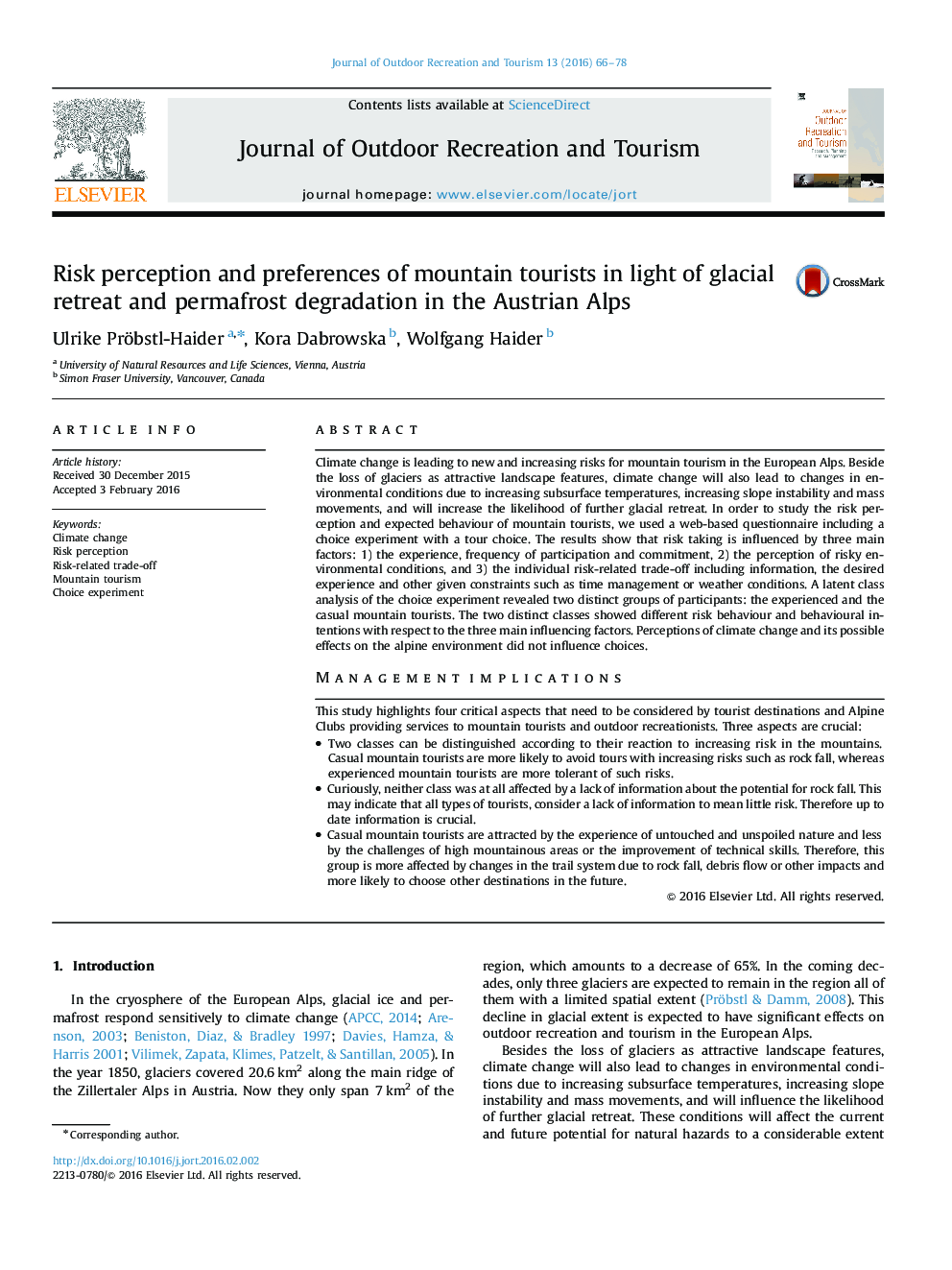| کد مقاله | کد نشریه | سال انتشار | مقاله انگلیسی | نسخه تمام متن |
|---|---|---|---|---|
| 92357 | 159950 | 2016 | 13 صفحه PDF | دانلود رایگان |
Climate change is leading to new and increasing risks for mountain tourism in the European Alps. Beside the loss of glaciers as attractive landscape features, climate change will also lead to changes in environmental conditions due to increasing subsurface temperatures, increasing slope instability and mass movements, and will increase the likelihood of further glacial retreat. In order to study the risk perception and expected behaviour of mountain tourists, we used a web-based questionnaire including a choice experiment with a tour choice. The results show that risk taking is influenced by three main factors: 1) the experience, frequency of participation and commitment, 2) the perception of risky environmental conditions, and 3) the individual risk-related trade-off including information, the desired experience and other given constraints such as time management or weather conditions. A latent class analysis of the choice experiment revealed two distinct groups of participants: the experienced and the casual mountain tourists. The two distinct classes showed different risk behaviour and behavioural intentions with respect to the three main influencing factors. Perceptions of climate change and its possible effects on the alpine environment did not influence choices.Management implicationsThis study highlights four critical aspects that need to be considered by tourist destinations and Alpine Clubs providing services to mountain tourists and outdoor recreationists. Three aspects are crucial:●Two classes can be distinguished according to their reaction to increasing risk in the mountains. Casual mountain tourists are more likely to avoid tours with increasing risks such as rock fall, whereas experienced mountain tourists are more tolerant of such risks.●Curiously, neither class was at all affected by a lack of information about the potential for rock fall. This may indicate that all types of tourists, consider a lack of information to mean little risk. Therefore up to date information is crucial.●Casual mountain tourists are attracted by the experience of untouched and unspoiled nature and less by the challenges of high mountainous areas or the improvement of technical skills. Therefore, this group is more affected by changes in the trail system due to rock fall, debris flow or other impacts and more likely to choose other destinations in the future.
Journal: Journal of Outdoor Recreation and Tourism - Volume 13, April 2016, Pages 66–78
